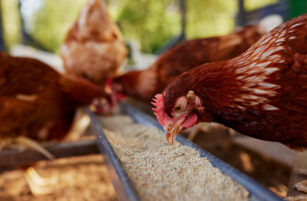- December is a good time to look at the world’s wheat harvests and figure out what they mean for global trade.
- With EU production down 18.7m tonnes year-on-year, there’s an opportunity for Russia to pinch North African demand after a healthy crop; and with Australia’s production up 100%, Asian buyers should continue to see increased competition in 2020/21.
- The need for change in trade, due to the variations in harvests across the globe will have interesting impacts on market prices.
Global Wheat Production and Stocks Increase for 2020/21
The Northern Hemisphere crops are cut and in the silos. The Southern Hemisphere crops are making their way into store and a relatively firm picture of the world’s supply and demand is becoming known.
The USDA’s latest WASDE released, published on the 10th December, failed to set the global wheat futures markets on fire. However, looking at what is new or different from the previous year makes for some interesting thoughts.
According to the December WASDE:
- Global wheat production will total 764.50m tonnes in 2020, up 9.16m tonnes year-on-year.
- Global wheat stocks will total 316.50m tonnes in 2020, up 15.88m tonnes year-on-year.
Both these numbers are high, and the world is not running out of wheat this year with record stocks on the cards!
Supply
This year’s European wheat crop has shrunk from 154.51m tonnes in 2019 to a mere 135.80m tonnes as a result of harsh weather extremes.
Russia’s production has increased after a good harvest, from 73.61m tonnes in 2019 to 84.00m tonnes this year.
Australia has nearly doubled its wheat crop from 15.20m tonnes in 2019, to potentially 30.00m tonnes in 2020. This comes as significant rains following years of drought preceding 2019 have radically increased production.
The US produced 52.58m tonnes of wheat in 2019, but with the smallest acreage since records began way back in 1919, estimates for 2020 sit at 49.69m tonnes.
Overall, the major exporters look to have increased production from 324.92m tonnes in 2019 to 327.05m tonnes in 2020.
Demand
China is the most interesting here, with imports set to increase from 5.38m tonnes in 2019 to 8.50m tonnes in 2020 as they rebuild their hog herd.
North African importers on the coast of the Mediterranean Sea are set to up imports from 27.74m tonnes in 2019 to 29.70m tonnes in 2020 following poor harvests.
As a whole, the main importers estimate purchases up from 122.16m tonnes in 2019 to 123.65m tonnes in 2020.
The Impact on Trade Flows and Geography
Higher production for Australia in 2020 has impacted the South-East Asian market (projected buyers of 26.35m tonnes in 2020/21). Asian buyers have seen an increase in competition from Australian sellers, as geographical proximity and large supplies have resulted in decreasing purchases from further afield.
The smaller European crop and the larger Russian crop will aid Russia’s competitive edge as an exporter to North African markets, as demand has increased due to poor harvests and Europe’s export availability has weakened.
China has seen a devasting destruction to its hog herd, as we have mentioned in the past. There is ambition to rebuild numbers as swiftly as possible, which has led to an increase in imports of agricultural commodities (notably corn and wheat). China’s political issues with both Australia and Canada limit purchases and leave greater opportunities for the US, with Trade Agreements to satisfy, as well Russia to fill any holes.
Trade Flows and the Markets
Changes in production and trade flows mean the relevant market prices must react to facilitate this change.

Source: DTN Prophet X
As we write, more reports are coming out of Russia as Officials ponder wheat export taxes from February 2021, as they see a need to curb potential food inflation due to higher world wheat prices and increased exports.
Smaller production in Europe has seen higher futures prices over recent months to curb exports. We have seen this in Paris, but it is particularly true of London, following a disappointing 2020 harvest in the UK.
Australia has needed to become more competitive and prices must therefore drop in 2020/21 relative to competition to encourage the anticipated 20m tonnes of exports (up 10.86m tonnes year-on-year).
Conclusions
- The need for change in trade, due to the variations in harvests across the globe will have interesting impacts on market prices.
- Buyers looking for the cheapest offers will need to look further afield when nearby sellers are struggling for supply.
- In the same way, larger sellers may have to offer into new markets at lower FOB prices to find the purchasers.
- Stable world numbers overall do not necessarily lead to stable prices everywhere!

Other Opinions You May Be Interested In…















